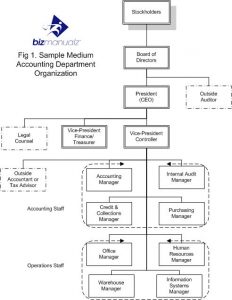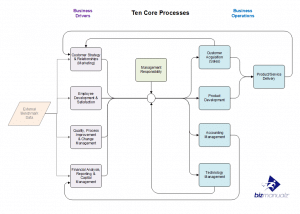An Operations Manual Example: How to Create an Effective Guide for Your Business

Having a fully operational and successful company is no easy feat. As such, it’s important to have guidelines in place that can help your business run smoothly and efficiently. One such guideline is an operations manual, which can effectively serve as a comprehensive reference guide for your company’s processes and procedures. Here’s a look at why having an operations manual is important, the key components of a successful one, and how to go about creating one for your own business. An operations manual example: How to create an effective guide for your business.
Understanding the Importance of an Operations Manual
An operations manual can help identify areas where processes can be improved. By reviewing the manual regularly, you can identify bottlenecks or inefficiencies in your operations and make changes to improve them.
Streamlining Business Processes
At its core, the operations manual serves to streamline your business’s operations by providing clear and concise instructions on how to perform specific tasks. This, in turn, can help your employees save time and work more efficiently, leading to increased productivity and overall effectiveness.
For example, if you own a manufacturing company, your operations manual might include instructions on how to operate machinery, how to maintain equipment, and how to troubleshoot common issues. By having these instructions readily available, employees can quickly and efficiently perform their tasks, reducing downtime and increasing output.
Ensuring Consistency and Quality
Not only does an operations manual streamline processes, but it also ensures that tasks are completed consistently and to a high degree of quality. For example, if you run a restaurant, your operations manual might include instructions on how to prepare each dish on the menu, ensuring that every customer’s experience is the same, no matter who is preparing the food.
Similarly, if you own a service-based business, your operations manual might include instructions on how to interact with clients, ensuring that every employee provides the same level of customer service and maintains a consistent brand image.
Facilitating Employee Training and Onboarding
By having an operations manual in place, you can ensure that all employees are trained to the same degree of efficiency and quality. New hires can be provided with the manual to read and understand the processes and procedures of the company promptly without needing to rely on more experienced employees for information.
Additionally, an operations manual can serve as a reference guide for employees as they perform their daily tasks. If they encounter a problem or have a question, they can refer to the manual for guidance, reducing the need for them to seek out assistance from their colleagues or managers.
Overall, having a comprehensive operations manual is essential for any business looking to improve its efficiency, consistency, and quality. By providing clear instructions, facilitating employee training and onboarding, and identifying areas for improvement, an operations manual can help your business run more smoothly and effectively.
Key Components of an Effective Operations Manual
A well-crafted operations manual provides a clear and concise explanation of the company, mission statement, organizational structure and roles, Standard Operating Procedures (SOPs), policies and guidelines, and employee training and development resources.
Overview and Mission Statement
An operations manual is an essential tool for any organization. It serves as a guidebook for employees to understand the company’s goals, structure, and procedures. The manual should begin with an overview of your company and its mission statement.
This section sets the tone for the manual and helps employees understand the company’s goals and purpose. Your company overview should include a brief history of the company, its current status, and future goals. You can highlight the company’s achievements and its impact on the industry or community.
Organizational Structure and Roles

Accounting Organization Chart
The organizational structure of a company defines how it operates. It outlines the roles and responsibilities of each department and how they fit into the company’s overall structure. This section of the manual should provide a clear and concise overview of the company’s organizational structure.
It’s important to include a visual representation of the organizational chart to help employees understand the structure better. You can also describe each department’s roles and responsibilities and how they interact with other departments. This fosters a sense of unity and collaboration and helps employees understand how their role fits into the company’s broader goals.
Standard Operating Procedures (SOPs)
The bulk of your operations manual should be dedicated to Standard Operating Procedures (SOPs). These are the specific instructions on how to complete essential tasks, and they should be written in a clear, concise, and easy-to-follow manner. Consider breaking each SOP down into sub-steps or bullet points to make it more digestible.
SOPs should cover all aspects of the company’s operations, from customer service to production and safety protocols. They should be regularly updated to reflect changes in processes and technologies. Providing detailed SOPs ensures that employees can perform their duties efficiently and effectively, leading to increased productivity and customer satisfaction.
Policies and Guidelines
This section should cover any official policies and guidelines for the company. This includes HR policies, sick leave, vacation time, and other policies that affect employees. It’s important to provide clear and concise policies to ensure that employees understand their rights and responsibilities.
You can also include guidelines for ethical behavior, dress code, and other expectations for employees. Providing clear policies and guidelines helps to create a positive work environment and reduces misunderstandings and conflicts.
Emergency Procedures and Safety Protocols
Emergencies can happen at any time, and it’s crucial to have procedures in place to ensure employee and customer safety. This section of the manual should outline any emergency procedures your company has in place, such as what to do in case of a fire or medical emergency.
It’s also essential to detail any safety protocols your company has in place, such as personal protective equipment requirements or hazardous material handling procedures. Providing clear and concise safety protocols ensures that employees can work safely and reduces the risk of accidents or injuries.
Employee Training and Development Resources
Employee training and development are essential for the growth and success of any organization. This section of the manual should provide resources for employee training and development, such as training materials or resources on career advancement opportunities.
You can also include information on mentorship programs, employee recognition programs, and other initiatives that promote employee growth and development. Providing opportunities for training and development helps to increase employee satisfaction and retention and ensures that employees have the skills and knowledge to perform their duties effectively.
Gathering Information for Your Operations Manual

Ten Core Business Processes are critical
Creating an operations manual is an essential step in streamlining your business processes and ensuring that your company runs smoothly. A comprehensive operations manual provides your employees with a clear understanding of their roles and responsibilities, as well as the procedures they need to follow to carry out their tasks effectively. Here are some tips to help you gather the information you need to create an effective operations manual.
Conducting a Thorough Business Analysis
Before you start creating your operations manual, it’s essential to conduct a thorough business analysis. A business analysis involves examining each department and breaking down what tasks they perform, how they are performed, and who is responsible for them. This information will form the basis of your manual.
During your analysis, you should also identify any areas of your business that need improvement or optimization. This could include identifying redundant processes or areas where the workflow could be streamlined.
By conducting a thorough business analysis, you can ensure that your operations manual accurately reflects your company’s existing processes and procedures.
Collaborating with Department Heads and Key Personnel
Once you have your business analysis completed, collaborate with department heads and other key personnel to verify the accuracy of your analysis and to gather any additional information needed. Department heads and key personnel can provide valuable insights into their respective areas, and their input can help you create a more comprehensive and accurate operations manual.
During your collaboration, you should also ensure that all stakeholders are on the same page regarding the goals and objectives of the operations manual. This will help ensure that everyone is working towards the same goals and that the manual accurately reflects the needs of the business.
Reviewing Existing Documentation and Resources
Review any existing documentation and resources, such as employee manuals and policies, to ensure they align with the information gathered in your business analysis. As you create your operations manual, you may find that certain policies or protocols need to be revised or removed entirely.
It’s also essential to ensure that your operations manual is consistent with any industry standards or regulations that your business must comply with. This will help ensure that your business is operating legally and ethically.
By following these tips, you can create an operations manual that accurately reflects your company’s processes and procedures, and that provides your employees with the information they need to carry out their tasks effectively.
Operations Manual Example
An operations manual can make all the difference when it comes to running a successful business. It streamlines processes, ensures consistency and quality, and facilitates employee training and onboarding. By following the steps outlined above, you can create an effective and comprehensive operations manual example that can help your business run smoothly and efficiently.















Thank you for emphasizing the importance of conducting a thorough business analysis before creating the operations manual. I completely agree that it is essential to examine each department, their tasks, and responsibilities to form the basis of the manual. Additionally, identifying areas for improvement or optimization is crucial for streamlining workflow and eliminating redundant processes. Collaborating with department heads and key personnel is a great idea to verify the accuracy of the analysis and gather additional information. Their insights will undoubtedly contribute to creating a more comprehensive and accurate operations manual. It is also important to ensure that all stakeholders are aligned with the goals and objectives of the manual to ensure its effectiveness.